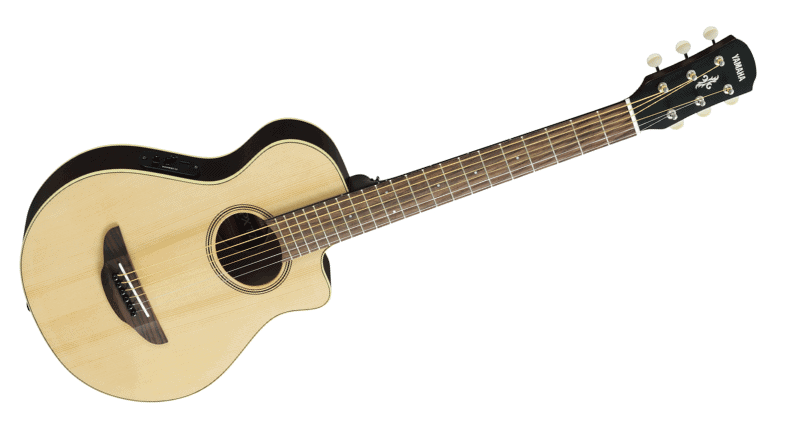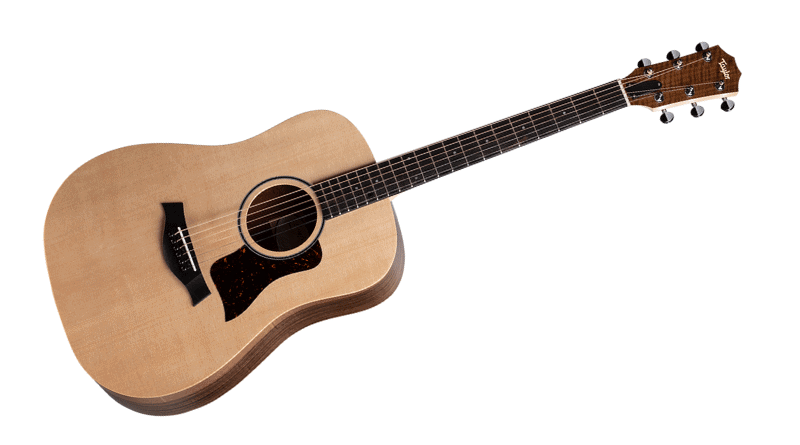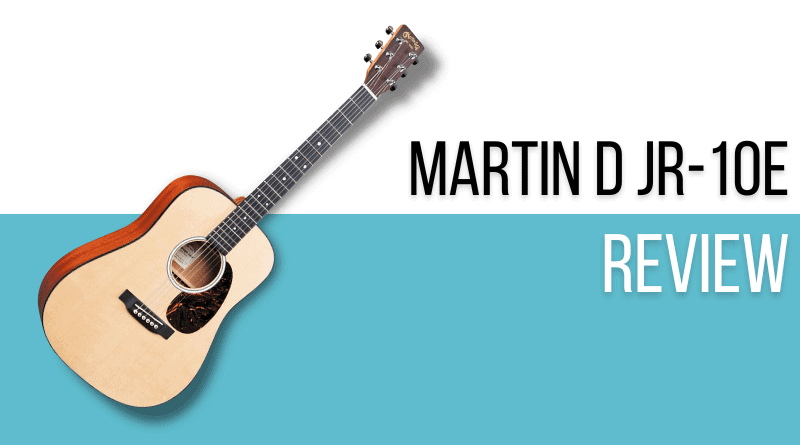The dreadnought is one of the most iconic guitar shapes ever built, but it’s no secret that this is an infamously big and bulky design. Its tones are unmatched, but getting them often means sacrificing comfort, especially for younger players and guitarists with small hands.
Enter the Martin Martin D Jr-10E – a genuine Martin dreadnought built in a more compact 15/16 size, making it an amazing choice for players who might struggle with the size of a full size model.
In this KillerGuitarRigs Review, we’ll be taking an in depth look at the Martin D Jr-10E, the guitar we named as top acoustic pick in our roundup of the best guitars for small hands.
If you’ve always wanted a Martin dreadnought, but didn’t want to deal with a full size guitar, you’ll definitely want to keep on reading!
Read more about our review process.
Contents
Martin D Jr-10E: Who Is This For?
Not only is the Martin D Jr-10E small enough to accommodate younger players, but thanks to its incredible build quality and durability, it’s also able to take a bit of punishment, too. Any parent who has ever bought anything for their child, no matter if they’re 6 or 16 understands this need, and it’s one we can happily say Martin has met.
Adult players looking for a smaller, more comfortable guitar will also find this to be an extremely appealing option. Its slim neck is great for those with smaller hands, and even if you’re a larger player, it makes for an amazing travel guitar.
Appearance / Features / Controls
The D Jr-10E is a junior sized dreadnought acoustic, and at a glance isn’t noticeably smaller, although as soon as you pick it up you’ll feel a world of difference.
It features a solid spruce top, which provides a truly versatile range of tones, making the D Jr-10E great across a huge number of genres. The back and sides were made of sapele, which is a close relative of mahogany. The use of sapele is great for balancing the brightness of spruce, while still keeping costs at a minimum.
The D Jr is a 15/16ths size model, making it noticeably larger than the Little Martin series, which are ¾ size. Despite the reduced size, its dreadnought body shape still has a strong impact on the acoustic performance, giving it tight tones, superb projection and plenty of volume.
This model is a big step up from the Little Martin series in terms of aesthetics. It has a pearloid rosette, a faux tortoise shell pickguard and even top and bottom body binding. It really does look extremely similar to the full size D models, and that’s definitely an appealing feature.
It had a Dreadnought Jr neck profile, which we found to be extremely comfortable, and was one of the biggest reasons for naming this guitar as our top pick for players with small hands. It was fast and easy playing, but still had enough substance to encourage proper form.
As for hardware it had a set of nicely chromed sealed gear tuners, with a white Tusq saddle and nut. It was also equipped with Fishman Sonitone electronics – this just happens to be one of our favorite systems, and we found it was an excellent addition to an already great guitar.
Performance / Sound
We loved that even though the D Jr-10E was only marginally smaller than full size, its slim body and excellent ergonomics made it feel like a much smaller guitar. This really helps smaller players, and anybody else who just doesn’t like the bulky feel of a full size dreadnought.
We thought that the out of the box setup was very good. The action was nice and low, and the neck was arrow straight. We didn’t think it needed anything in the way of adjustment, and were overall really happy with the playability.
Tonally speaking, it still had quite a full sound profile, despite being reduced size. The dreadnought body shape still had a lot of influence in the projection and volume, so we didn’t think performance suffered as a result of the size.
Of course, it had the big booming bottom end and room filling volume, but that was interspersed with punchy mids, and some sparkling top end that really helped it to cut through a mix.
When playing through the Fishman electronics, we didn’t experience any loss in the natural acoustic character, which is a huge plus. The sound hole mounted volume and tone controls were easy to access, and helped us to manage the amplified sound really well.
Other Guitars to Consider
The Martin D Jr-10E is a stellar choice if you struggle to hold on to larger guitar, but of course there are still some great alternatives to consider before making your decision. We’ve highlighted a couple of our favorites below.
Yamaha APXT2

The Yamaha APXT2 is one of the best built guitars at its price point, and is an exceptional value when you consider what you’re getting. It features a solid spruce top, a comfortable body, and a thin, easy to play neck. Its electronics system features a built in preamp, and even includes a handy tuner.
Taylor Big Baby Taylor BBTE

When weighing up your options you should definitely give some consideration to the Taylor Big Baby Taylor BBTE. Like the Martin, it’s a 15/16 dreadnought, and it also features a quality electronics system for easy amplification. It boasts a solid Sitka spruce top, with walnut on the back and sides, which results in a brighter, snappier tone.
Final Thoughts on the Martin D Jr-10E
Martin’s dreadnought acoustic guitars are legendary, there’s no doubt about that, but the sheer size can be off putting for a lot of players, particularly those with smaller hands. That’s why models like the Martin D Jr-10E make so much sense. You get the tones, style, and quality you’d expect, with very little sacrifices required for the reduction in size. How Martin has managed this is beyond us!
It offers a full, rich voice, with superb playability and great feel. The fit and finish is absolutely superb, and very much on par with the full size models, which was great to see. If you have smaller hands and you’re in the market for a high end acoustic, we highly recommend the D Jr-10E.


